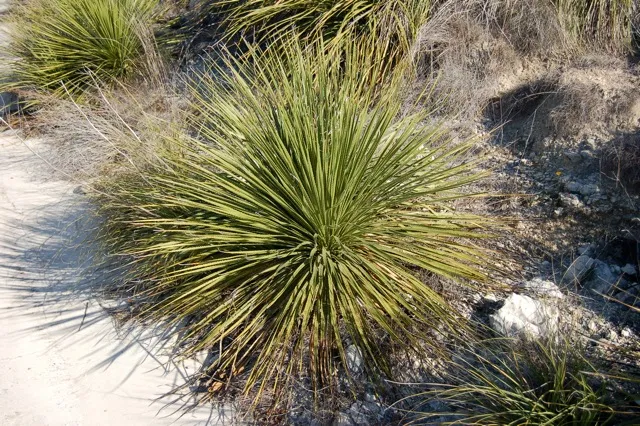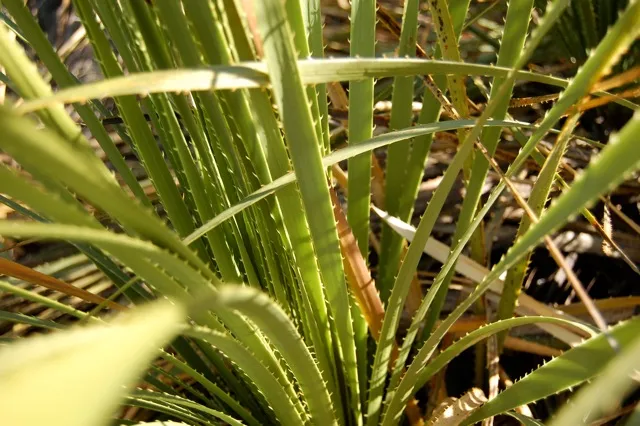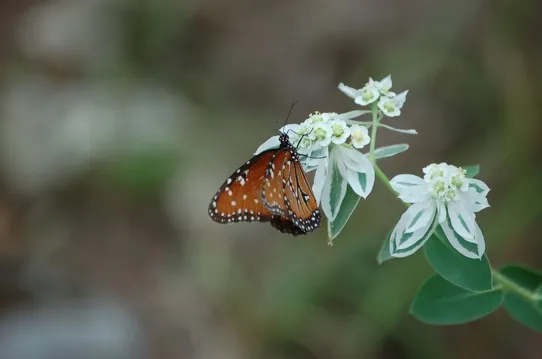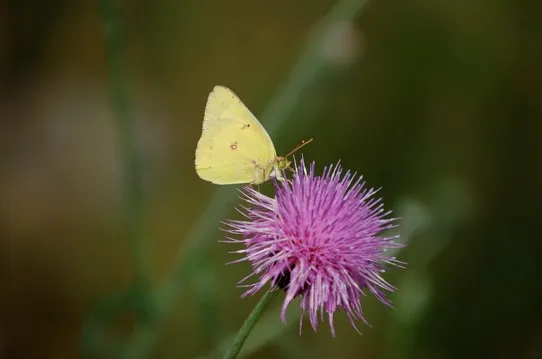By Delmar Cain
Since it is January it is a good time to look forward, since here in the Hill Country the summer can occasionally arrive in a hurry. But since it is early January I hope that it is not too late to take a quick peek backward as well.

The Boerne Chapter of the Native Plant Society of Texas (NPSOT) just finalized its list of recommended plants for the NICE (Natives Instead of Common Exotics) Program for 2012. Because of the drought and the apparent high probability that it will continue into the summer, the group responsible for selecting the 2012 plants focused on those native plants in our area that have proven to be most resistant to low annual rainfall. Of course with a group decision, some individual favorites did not make the list. But those that did make the final list are tough as barbed wire.
The NICE pick for January is the sotol (Dasylirion spp), of which the USDA lists three separate species. Trans-Pecos sotol or green sotol (Dasylirion leiophyllum) is generally found in far West Texas, New Mexico and Northern Mexico. The most widespread species is the common sotol (Dasylirion wheeleri), which is found in Texas, New Mexico, Arizona and Mexico. The species that we see growing in the Hill Country is Texas sotol (Dasylirion texanum), which also can be found in West Texas and south into Mexico.

Sotol in all its forms, although often mistaken as a yucca, is an evergreen perennial shrub in the Lily family. But it is definitely a lily with an attitude, since its grass-like sharp edged leaves, which grow from a cupped base, have evenly spaced spines that protect it from browsers. Those spines provide a way of distinguishing D. leiophyllum and D. texanum. In D. texanum the spines curve toward the tip of the leaf, but in D. leilphyllum the spines curve toward the base. D. wheeleri has leaves that have a bluish tint.
The base and leaves of sotol can grow up to six feet in width and may reach a height of three feet. But the most impressive aspect of sotol is its yellowish flower, which is a 2-3 foot spike on a 9-15 foot stalk. The stalk, when dried, is solid enough to be made into a substantial walking stick—light but sturdy. After the leaves were removed, the base of the plant was used by both the Native Americans for food and by ranchers for cattle feed. The sugar in the base has been used for making liquor called “sotol”. The leaves were used for making mats and baskets.
Sotol is easily grown in sandy and limestone based soils as long as it has good drainage and lots of sun. Given its native growing area, you can be assured that it is very drought tolerant. It can be found in many nurseries and planting instructions are located on the Boerne NPSOT website.

Finally I wanted to take a quick peek back to 2011 and remind you of three plants that I missed in this exceptionally dry year.
When Kip Kiphart, Boerne’s local monarch butterfly expert, escorted Lincoln Brower, the foremost monarch expert in the country, on a trip to Menard County in October to collect a sampling of monarch butterflies for research, Kip asked me if I knew of some local sites where frost weed was in bloom. I had to report that I knew of none. Frost weed, which is an important nectar source for butterflies in the fall and especially for the monarch butterflies that are en route to Mexico, usually can be found in numerous places in our area. But other than a few plants in the CNC I had to report that the number of plants that I was aware of in our area was dismally small.

I know that many do not like frost weed even when if they don’t know its name. For many frost weed, Snow on the mountain, and Texas thistle could all be put on that Gilbert and Sullivan-like list of “plants that would not be missed”. But I missed them this year because they were in short supply at my house. And these three plants are generally very reliable nectar plants for butterflies. Consequently, their absence and that of many other nectar plants meant that butterflies were also in short supply. Let’s hope that that this next year brings back these “old reliables”.


